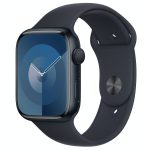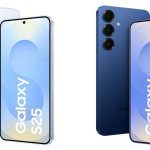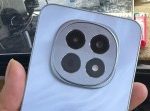
When shopping, do you ever come across or try on an item that you suspect may look cheap but can’t quite put your finger on why? Well, today, I’m here to help you not only decode why an item may look less than worthy of its price tag but also avoid accidentally purchasing such pieces only to later regret it. Seeing as I’ve been a recreational or professional shopper pretty much all my life, I’ve come to learn certain tricks to figuring out which items to skip and what to look for in a budget buy.
Some are more obvious such as cheap-looking hardware or zippers, but others, such as oddly placed seams and unfinished hems, can take a bit of practice to spot. To see my full list, read about all seven of the characteristics to look out for, and do a little editor-approved shopping along the way, just keep scrolling.
When it comes to handbags, hardware is one of the main factors that often lead to their showing their price. Poorly done metal buckles and clasps can easily be skipped in place of simpler and sleeker pieces that look more high-end.




As someone who loves wearing black, I relish in the fact that clothes, shoes, and bags tend to look the most expensive in my favorite non-hue. However, if avoiding color altogether isn’t your thing, stick to richer tones such as beige, navy, and burgundy, and skip the brights (like pink or green) as well as anything that looks faded off the bat.




Unless it clearly looks like an intentional design choice, overly exposed zippers on boots and clothing are usually cheaper-looking than hidden zippers or alternative closures like buttons or belts. The good news is that it’s pretty easy to see when a zipper looks out of place, so you’ll know right away to choose an alternative.




Because the occasional raw hem can actually look really cool and chic, this one requires a bit more discretion than the others. A general thought to keep in mind when shopping, however, is whether a raw hem looks like an aesthetic choice on the part of the brand or like it was just the easier way out. If an item looks like it could have benefited from an actually sewn hem, it’s best to opt out.




Whether it’s clothing, shoes, or handbags, embellishing is often a major factor in making something look cheap. It’s unfortunate because I actually love a bejeweled moment, but embellishments are just historically hard to get right. It’s best to avoid beading, brooches, appliqués, and more if you’re ever unsure about them or on a strict budget.




Now, this has two aspects. First, if you already own an item that’s prone to wrinkles, we always suggest steaming or ironing it in order to look like your most put-together and polished self. Second, if you’re shopping, it’s always good to take note of how wrinkled an item is before you’ve even worn it. Wrinkled clothes tend to look flimsy and less substantial, so if you see a jacket, top, or pants are wrinkly right off the bat, you might want to leave them at the store.




This might be me getting picky, but I tend to avoid shoes or bags that have a seam down the front or center (that looks like it shouldn’t be there). Similarly, pant seams should follow clean lines, and jacket seams look best when you can’t see them. With all items, you can often tell when a seam looks out of place, and since that’s not fixable by alteration, I would advise against buying them if you’re going for a luxe look.




This post was published previously and has since been updated.
Powered by WPeMatico






